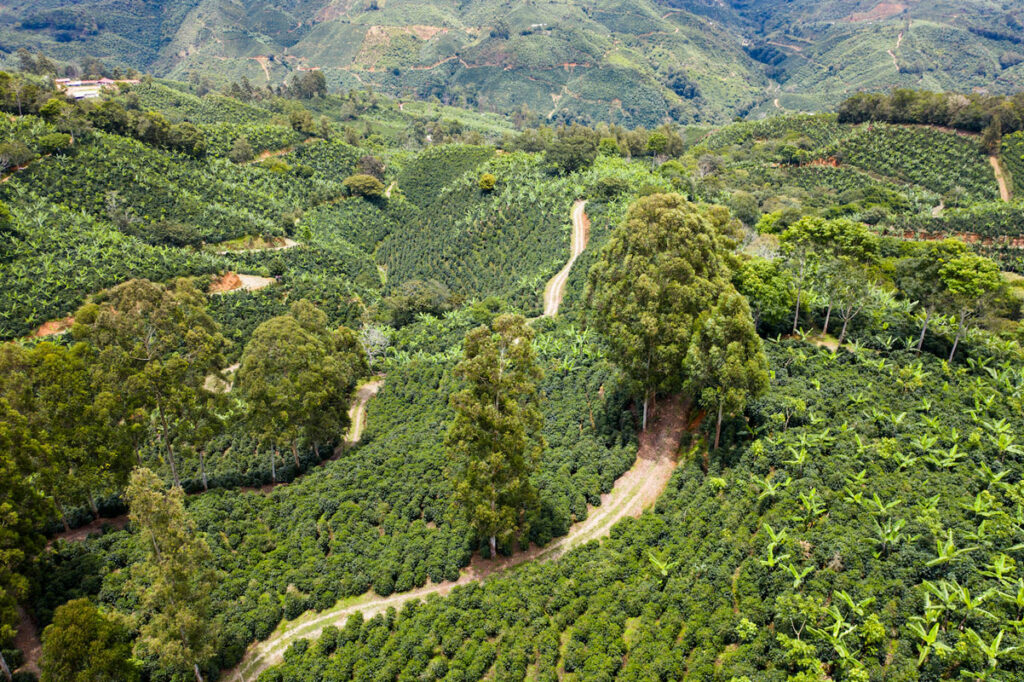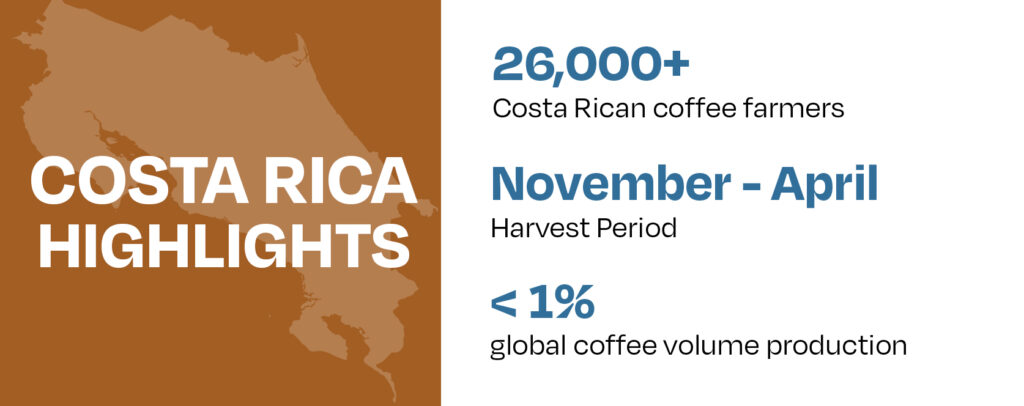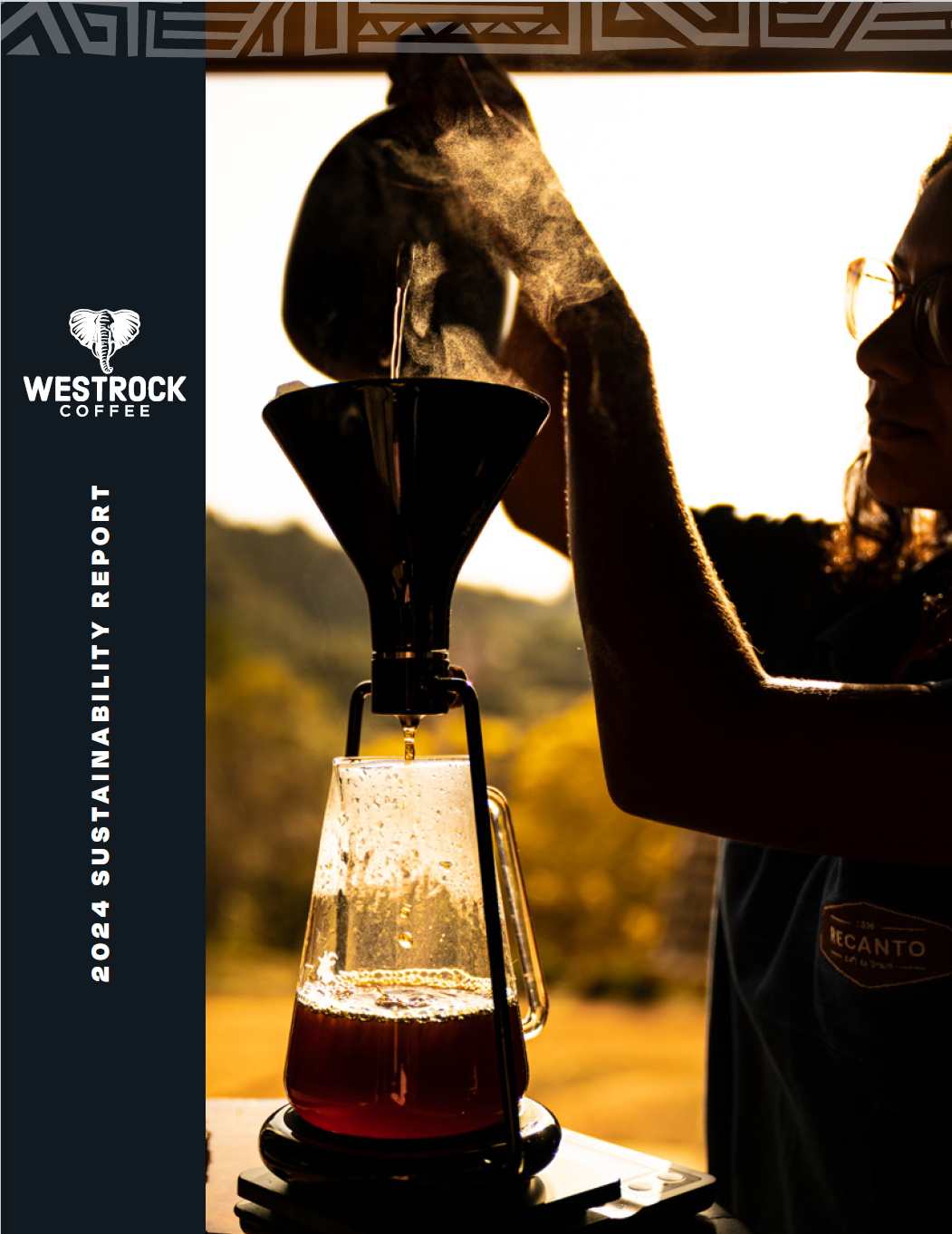November 18, 2024
When thinking about coffee from Central America, for many people Costa Rica is one of the first names that comes to mind. This is remarkable as Costa Rica produces far less than its Central American neighbors, Honduras, Guatemala, and Nicaragua. The name recognition Costa Rica has developed for itself has boosted international interest in both the Costa Rican landscape and the coffee it produces.


Costa Rica is an ideal place for both coffee production and vacationing as it possesses a year-round tropical climate, beaches, mountains, and diverse flora and fauna. Although the country makes up less than 0.03% of the world’s landmass, Costa Rica contains 5% of the world’s biodiversity! The lush landscape of Costa Rica allows for coffee production in eight different regions with the highest quality coffee coming from altitudes ranging from 1,200 to 1,700 meters (3,900 to 5,500 feet).

Coffee arrived in Costa Rica in the late 1700’s and Costa Rican’s quickly discovered how well-suited coffee was to the landscape. Coffee production began to flourish, and Costa Rica became the first Central American nation to develop a burgeoning coffee industry. In the mid-1800’s the Costa Rican government distributed coffee seeds to farmers in order to encourage widespread adoption of coffee farming and to develop the country’s agricultural industry as they declared independence from Spain. For many years, coffee was the top agricultural export which transformed the Costa Rican economy and allowed the country to modernize. However, the country’s dependance on the coffee industry and volatile global coffee prices came to a head in the 1950’s when global coffee prices fell, and Costa Rican coffee plants were hit by pests and diseases. The Costa Rican coffee industry has recovered since then; however, coffee is no longer a major pillar of the country’s economy.

As a country producing smaller volumes of coffee than other Central and South American countries, Costa Rica has had to distinguish itself in different ways. The current coffee landscape in Costa Rica is more focused on growing and processing higher quality, specialty micro-lots. Not only do these smaller lots of coffee allow for exacting care through every step of production, but it also provides green coffee buyers with traceability down to the farm or plot level, something that is much more difficult to achieve with huge quantities of commercial coffee. The micro-lot movement also gave farmers an incentive to experiment and attempt to distinguish their coffee from others. This experimentation has led to a rise in processing coffee using the honey method. When processing coffee using the honey method, the coffee cherry is removed from the bean, but the gooey mucilage is left on the bean, allowed to dry before being removed, giving the coffee nuanced and fruity flavors.
At Westrock Coffee our flavor experts love Costa Rican coffee for its notes of apricot, chocolate, molasses, and honey.




